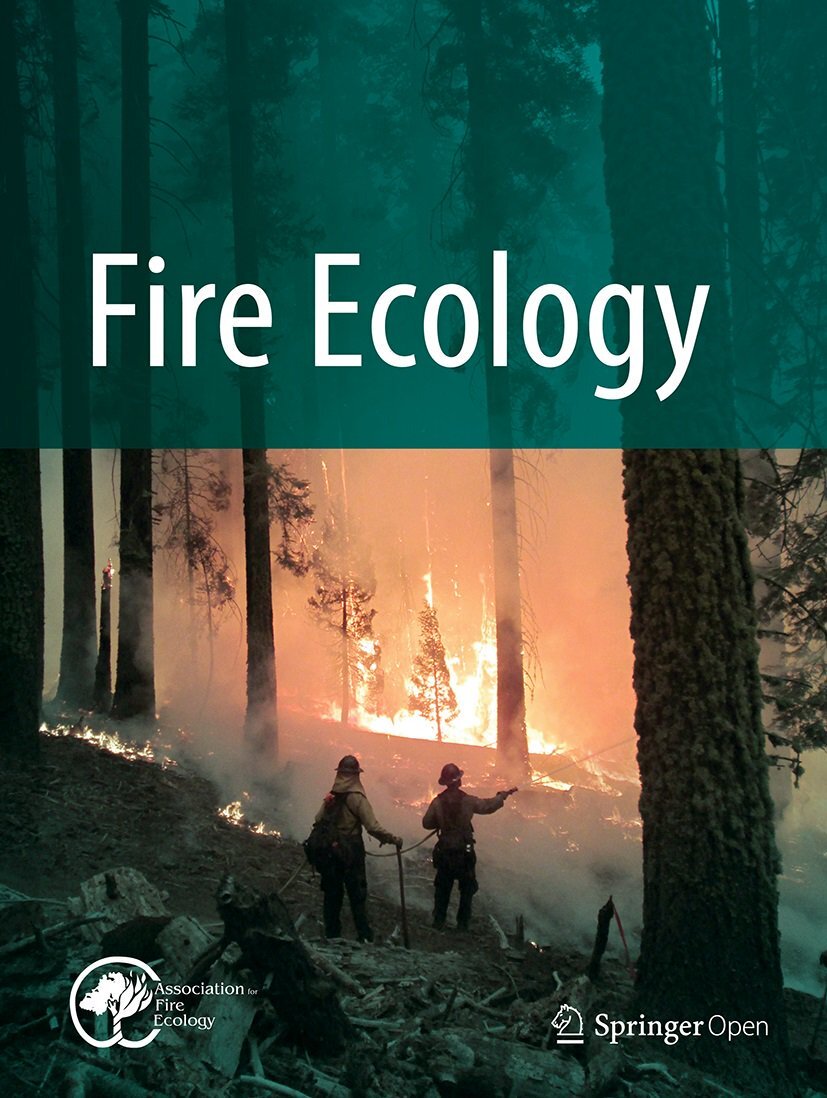2017 Fire Congress Research Highlights
The Research Highlights below are short summaries of presentations given at the 7th International Fire Ecology and Management Congress, which was held in Orlando, Florida, November 28-December 2, 2017. This conference was hosted by the Association for Fire Ecology, in cooperation with the Southern Fire Exchange. These 1-3 page documents provide insight into how research can influence management decisions and practices, and we hope they are a valuable resource or both wildland fire managers and researchers.
General Sessions by Topic
Case Studies and Lessons Learned
40 Years of Fire History in SE France: What’s the Story? (Anne Ganteaume, IRSTEA)
Aligning Endangered Species Management with Ecosystem Restoration: Manager Perspectives on Red-Cockaded Woodpecker Management (Shelby Weiss, The Ohio State University)
Creation and Implementation of the Forest Plantations Fire Risk SAFOR Certification System, to Improve Insurability of Small and Medium Companies (Smes) (Verónica Loewe, Chilean Forest Institute (INFOR))
Fire Behaviour in Black Spruce Forest Fuels Following Mulch Fuel Treatments: A Case Study at Red Earth Creek, Alberta (Kelsy Gibos, Wildfire Management Branch, Alberta Agriculture & Forestry)
Fire Ecology and Effects
A Soil’s Story of Southern Prescribed Fire (Adam Coates, Virginia Tech)
Assessing Fire Effects and Regime in a Coastal Strand Ecosystem (Barbara Blonder, Flagler College)
Fire Ecology as a Bridge to Increasing the Relevancy of Monitoring Data to Managers (Sherry Leis, Heartland Inventory and Monitoring Network, National Park Service)
Forest Development Following Wildfire in An Old-Growth Pinus Ponderosa Forest, Southern Cascades, CA (Natalie Pawlikowski, The Pennsylvania State University)
Prescribed Fire Effects on Northeast Florida Upland Plant Biodiversity and Abundance (Peter Maholland, U.S. Fish and Wildlife Service)
Wildfires and Wildland Urban Interface in Andean Patagonia, Argentina: First Assessment in a Rapid Growing Community (Maria Godoy, National Scientific and Technical Research Council (CONICET), Argentina)
Fire Management and Use
Managing at-Risk Species on Southeastern Public Lands: A Case Study on Embedded and Ephemeral Wetlands in Florida (Dennis David, National Wildlife Refuge Association)
Fire Modeling
Comparing the Use of Pyrometers and Thermocouples for Estimating Prescribed Burning Flame Temperature (Brant Portner, University of Arkansas, Division of Agriculture, Arkansas Forest Resources Center)
GIS and Remote Sensing
Reinforcing Wildfire Predictive Services with Timely Weather Information (Ping Yang, Texas A&M Forest Service)
Living with Fire ~ Cultural, Socio-Economic, Health
Forest Landowner Adaptation to Climate Change and Its Influence on Wildfire (Jeffrey Kline, USDA Forest Service)
Rebuilding and New Construction Trends after California Wildfires (H. Anu Kramer, University of Wisconsin, Madison)
Policy Issues
How Exceptional Was the 2017 Tubbs Fire? (H. Anu Kramer, University of Wisconsin, Madison)
Policy Barriers to Prescribed Fire: Perspectives from Across the West (Courtney Schultz, Colorado State University)
The Power of Incentives: How Insurance Premiums and Availability Shape Homeowner Mitigation Decisions (Rob Galbraith, USAA)
Restoration & Resiliency
Effects of Forest Restoration Treatments and Wildfires on Tree Spatial Patterns in the Colorado Front Range (Jeffery Cannon, Colorado State University)
Special Sessions
Beetle and Fire Interactions in Western North America
Impacts of Fire and Fuel Treatments on Tree Defenses and Resistance to Mountain Pine Beetle Bark (Sharon Hood, US Forest Service, Rocky Mountain Research Station, Fire, Fuel, and Smoke Science Program)
Connecting Direct and Indirect Measures of Soil Heating to First- and Second-Order Fire Effects Using Wildfire, Prescribed Fire, and Laboratory Investigations
Response of Seed Bank Composition to Soil Burn Severity Across a Range of Pine Barren Restoration Phases (Christel Kern, USDA Forest Service, Northern Research Station)
Exploring Past & Future Roles of the Cooperative Extension Service in U.S. Fire Education
Citizen Fire Academy Extension Programming: A Multi-Pronged Approach at Growing Fire Adapted Communities (Kara Baylog, OSU Extension)
Communicating Fire Science to Private Landowners and the Public: Extension’s Role in the Southeastern US (Holly Campbell, Southern Regional Extension Forestry)
Cooperative Extension's Next Great Role in Fire Outreach (Alan Long, Southern Fire Exchange)
Exploring Past and Future Roles of the Cooperative Extension Service in Southeastern U.S. Fire Education (Sharon Gamble, UF/IFAS)
Fire-Related Training and Educational Opportunities for Cooperative Extension & Other Educators (Jennifer Fawcett, North Carolina State University)
Fire Trek: The Next Generation
Fire Treatments on California Hazelnut to Enhance Karuk and Yurok Indian Basketry (Tony Marks-Block, Stanford University)
GRIN: Stoking the Flames for the Next Generation of Fire Scientists
The Influence of Fire Regime and Abiotic Factors on the Population Dynamics and Leaf Qualities of a Wild Harvested Understory Herb, Xerophyllum Tenax (Melanthiaceae) (Georgia Fredeluces (Hart), University of Hawai‘I, Dept. of Botany)
Prescribed Fire Science: An Interdisciplinary Focus on Fire We Use
Using Unmanned Aerial Systems for Monitoring Prescribed Fire (Valentijn Hoff Firecenter, University of Montana)
Restoring Fire Integrity: A New Paradigm Arises from the Ashes
Restoring Fire Integrity (Cecil Frost, University of North Carolina)
Toward an Inclusive Culture
Let’s Unpack An “Uncomfortable” Question: Why Don’t Women in Fire Universally Encourage More Women to Join Fire? (Sara Brown, USDA Forest Service)

